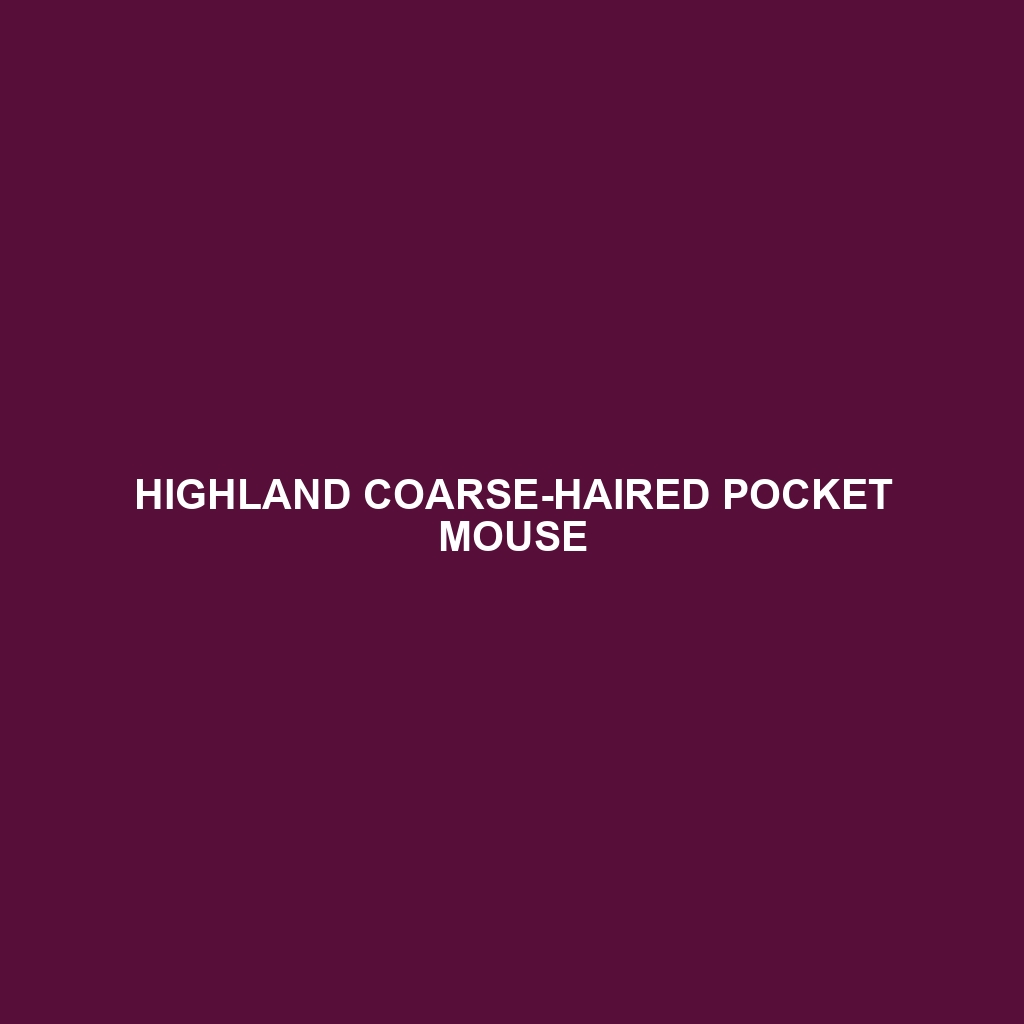Highland Coarse-haired Pocket Mouse ()
Common Name: Highland Coarse-haired Pocket Mouse
Scientific Name:
Habitat
The Highland Coarse-haired Pocket Mouse is primarily found in mountainous regions and high-altitude grasslands of North America. Their natural habitats range from arid deserts to grassy slopes, particularly in areas with rocky outcrops and sparse vegetation. They thrive in elevations typically above 1,800 meters (5,900 feet), where they can find shelters such as burrows and rock crevices.
Physical Characteristics
This species averages about 10 to 12 centimeters in body length, with a tail that can add another 8 to 10 centimeters. The Highland Coarse-haired Pocket Mouse features a distinctive coat with coarse hair, exhibiting a coloration that ranges from light brown to dark gray, often with white underparts. Its large, round ears and prominent whiskers enable it to sense its environment effectively, making it well-adapted to its habitat.
Behavior
The Highland Coarse-haired Pocket Mouse is primarily nocturnal, actively foraging at night to avoid the heat of the day. They exhibit a variety of behaviors, including digging and caching food, which helps them survive in environments where resources can be scarce. Their ability to climb and navigate rocky terrains makes them proficient in evading predators.
Diet
This pocket mouse primarily feeds on seeds, nuts, and insects, showing a preference for grasses and flowering plants that are abundant in their habitat. They are known for their habit of hoarding food, which helps sustain them through lean periods.
Reproduction
The Highland Coarse-haired Pocket Mouse breeds typically in the spring to early summer, producing litters of 2 to 6 offspring. The gestation period lasts about three weeks, after which the young are born blind and helpless. The mother is known to be attentive, caring for her young until they are capable of independent foraging.
Conservation Status
The conservation status of the Highland Coarse-haired Pocket Mouse is currently classified as Least Concern according to the IUCN Red List. However, habitat destruction and climate change pose potential threats to their populations, which indicates the need for continued monitoring and conservation efforts.
Interesting Facts
One fascinating aspect of the Highland Coarse-haired Pocket Mouse is their exceptional burrowing ability, which allows them to create complex tunnel systems that provide shelter from predators and extreme weather. Additionally, their fur is uniquely adapted to help regulate body temperature in chilly mountainous environments.
Role in Ecosystem
The Highland Coarse-haired Pocket Mouse plays a crucial role in its ecosystem as both a seed disperser and prey for various predators, including birds of prey and snakes. Their feeding habits help maintain plant diversity, while their presence in the food web supports the health of the entire mountainous ecosystem.
